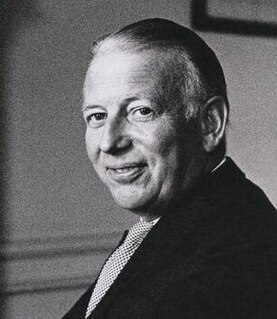
Tintern Abbey was a Cistercian abbey located on the Hook peninsula, County Wexford, Ireland.

There have been five baronetcies created for persons with the surname Barker, three in the Baronetage of England, one in the Baronetage of Great Britain and one in the Baronetage of the United Kingdom. All five creations are extinct.

Derek Colclough Walker-Smith, Baron Broxbourne,, known as Sir Derek Walker-Smith, Bt, from 1960 to 1983, was a British Conservative Party politician.
The Esmonde Baronetcy, of Ballynastragh in the County of Wexford, is a title in the Baronetage of Ireland. It was created on 28 January 1629 for Thomas Esmonde. He raised a cavalry regiment for Charles I and commanded a regiment during the Siege of La Rochelle. Esmonde was the only son of Sir Laurence Esmonde, who had abandoned the Roman Catholic faith during the reign of Queen Elizabeth and was raised to the Peerage of Ireland as Baron Esmonde in 1632. Lord Esmonde married firstly a Roman Catholic wife Margaret O'Flaherty, daughter of Murrough O'Flaherty, Chief of Iar Connacht, and they had a son, Thomas, the first Baronet. She feared that the boy would be raised a Protestant and ran away with him, raising him as a strict Roman Catholic. Lord Esmonde then repudiated Margaret and made a second marriage to Ellice Butler. As he would not admit his son's legitimacy Thomas was not allowed to succeed to the barony, which became extinct on his father's death in 1646. He did however gain possession of the family estates in County Wexford.
The Walker-Smith Baronetcy, of Broxbourne in the County of Hertford, is a title in the Baronetage of the United Kingdom. It was created on 18 July 1960 for the Conservative politician Derek Walker-Smith. On his retirement from the House of Commons in 1983 he was further honoured when he was created a life peer as Baron Broxbourne, of Broxbourne in the County of Hertfordshire. The life barony became extinct on his death in 1992 while he was succeeded in the baronetcy by his son, the second and present holder of the title.
There have been six baronetcies created for persons with the surname Brooke, one in the Baronetage of England, one in the Baronetage of Ireland and four in the Baronetage of the United Kingdom. As of 2015 four of the creations are extant, though one has been subsumed into a peerage.
There have been six baronetcies created for persons with the surname Newton, three in the Baronetage of England, one in the Baronetage of Nova Scotia and two in the Baronetage of the United Kingdom.
There have been four baronetcies created for persons with the surname Child, two in the Baronetage of England and two in the Baronetage of the United Kingdom.
There have been three baronetcies created for persons with the surname Power, all in the Baronetage of the United Kingdom.

There have been four baronetcies created for people with the surname Drake, three in the Baronetage of England and one in the Baronetage of Great Britain.
There have been two baronetcies created for persons with the surname Loftus, both in the Baronetage of Ireland. One creation is extant as of 2008.
There have been two baronetcies created for persons with the surname Hawkins, both in the Baronetage of Great Britain. One creation is extant as of 2008.

Saltmills is a small village located in the south-west of County Wexford, in Ireland. The village is located at the head of a small inlet that enters Bannow Bay. The village received its name from the medieval mills that existed just outside the village.
The Grogan Baronetcy, of Moyvore in the County of Westmeath, was a title in the Baronetage of the United Kingdom. It was created on 23 April 1859 for the Irish politician Edward Grogan. His son, the second Baronet, was an officer in the British Army. The latter was childless and the title became extinct on his death in 1927.

There have been seven baronetcies created for persons with the surname Herbert, three in the Baronetage of England, one in the Baronetage of Ireland and three in the Baronetage of the United Kingdom. All creations are extinct.
The High Sheriff of Wexford was the British Crown's judicial representative in County Wexford, Ireland from the 16th century until 1922, when the office was abolished in the new Irish Free State and replaced by the office of Wexford County Sheriff. The sheriff had judicial, electoral, ceremonial and administrative functions and executed High Court Writs. In 1908, an Order in Council made the Lord-Lieutenant the Sovereign's prime representative in a county and reduced the High Sheriff's precedence. However, the sheriff retained his responsibilities for the preservation of law and order in the county. The usual procedure for appointing the sheriff from 1660 onwards was that three persons were nominated at the beginning of each year from the county and the Lord Lieutenant then appointed his choice as High Sheriff for the remainder of the year. Often the other nominees were appointed as under-sheriffs. Sometimes a sheriff did not fulfil his entire term through death or other event and another sheriff was then appointed for the remainder of the year. The dates given hereunder are the dates of appointment. All addresses are in County Wexford unless stated otherwise.

There have been two baronetcies created for persons with the surname Dudley, one in the Baronetage of England and one in the Baronetage of the United Kingdom. Both creations are extinct.
Caesar Colclough may refer to:
Sir John Talbot Power, 3rd Baronet was an Irish Liberal politician.
Sir Caesar Colclough, 2nd baronet (1623–1684), of Greenham, Thatcham, Berkshire and Tintern Abbey, County Wexford, was an English Member of Parliament.








